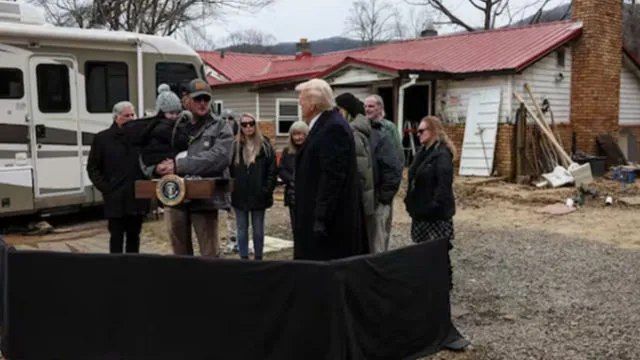From awe-inspiring spirituality emanating from the mighty Himalayas to the translucent blue waters of Maldives, South Asia exists as the richest cultural platform on planet earth. This piece of land has world’s most ornate biodiversity, assortment of languages and profundity of philosophy while being home to four influential philosophies, ie. Hinduism, Buddhism, Sikhism, and Jainism carve a meaningful gospel for this region including that of Sufi Islam. Ironically those cherished fundamentals of existence have now been fading and SAARC which manifests the gospel is itself gasping after failing to hold its meeting once again since 2014. The three main countries India, Pakistan and Bangladesh, caught in perennial across-the-border conflicts are also the countries that share some of those strongest social, psychological, and ethnic bonds which tie its people together.
First, a newly emerging radical nationalism of South Asia has failed to weaken across the border people’s attachments despite the bloodstained legacy of partition brought by the British. People on all sides of international borders long to reach out to their villages, their people, and the stories that defined their families. Second, even as governments remain combatant, people continue their aspirations to declare the futility of wars and a continuance of grassroots community interaction. Third, barring a few radically indoctrinated in current politics, most people collectively wish to keep out both China and USA from interfering and calling shots in the region. Much credit for people to people bonhomie goes to those dominant philosophies of the region which have never been radical, which propagated a divine unity of universe in which every life form is believed to be passing through an eternal cycle of rebirth and transmigration to sketch a unique meaning to power, accumulation, victory and governance vis a vis human existence. Taliban-ism is replacing this exuberant intellect of the South Asian environment, which as most of us believe may not be sustained, given the stronger people to people connect
South Asian countries have fallen in mutual trust since the cancellation of the 2016 SAARC meet at Pakistan following the Uri attack. So the recent cancellation of SAARC Foreign Ministers Meet at New York on the ominous Talibani kiss for Pakistan did not surprise anyone. A strong unanimity on ‘Deeper Integration for Peace and Prosperity’ as a motto unanimously agreed during their last held Kathmandu meet in 2014 is a shredded waste now. A deepening divide between people and their governments is a new reality which cremates much-cherished confidence-building measures (CBMs) defining foreign policies of the region. Three key safety measures which are immediately dropped from the gospel are non-proliferation, demilitarization and deterrence and gradually declaring people to people CBMs as inconsequential is a Talibani effect which people across the borders continue to condemn.
My intimacy with the region started around 1990s when I was invited to speak at environmental lawyer M.C.Mehta’s South Asian lawyers’ workshops at EcoAshram in Doiwala, Dehradun. I was to be accompanied by two young Pakistani lawyers Nauman and Samiya. Coming together we had a world to share from serious academics to socio-political and finally to our families during the eight hours of drive to the hills. The young lawyers were in full humour of their Daddi (grandmother) tales and Booya’s(father’s sister) audacity and idle elderly neighbours following their grandfather every morning for cups of teas followed by Ammi’s warfront against the father. Families remain the same wherever they are in South Asia. My later visits to Pakistan enlightened me with our home grown Panjabi humour flourishing in Lahore and the fashionable contemporizing affluent film world of out of box people thriving in Karachi or the heavily loaded public policy experts hungry for international project collaborations roving Islamabad. I recollect an emotional encounter with a country connect while on a visit to Karachi’s Hamdard Law University. After my lecture, a lady lawyer quietly came to me and pushed a packet in my hand pleading that I keep it as a gift from her. She shared her origin from Agra, named a few common places she had heard about from her ageing parents and had seen on the net my connection with that city. She explained that this was for my mom, who she overheard in some personal conversation, had knee problem and these special Khyber Pakhtunkhwa chilgozas (pine nuts) had great curative effect on such bone issues. At another such visit some of us were fondly invited by Akmal-Fauzia couple to their home for dinner with their mother who loved to meet anyone from India. Their 82 yr old mother on a wheel chair belonged to Lucknow and carried just one wish of visiting her city before her intekaal (death). Many of the names she brought in her conversation like Hazratgaunj, Kaiserbagh and Ameenabad from her Lucknow memory were fortunately not changed till 2006. She recollected the theatre Tasveer Mahal from her Aligarh encounters but the moment she mentioned her Lucknow home address my heart almost missed a beat, this house was the one that shared its boundary wall with the house where I spent my childhood in early sixties, Bharawan House on Wazir Hasan Road left behind with her brother in law who was a judge and a firm believer in the futility of partition, had refused to accompany them to Pakistan. I was shocked to recollect history of a lonely rich man in a two acre huge house,who was known to wear most attractive zari (gold or silver thread weaving) Achkan (knee size traditional coat for men) and on some occasions was seen with a caretaker who carried a royal parasol over him as he walked through. After such emotional nostalgia we were preparing to leave when she called me to a corner, held my hand fondly and said, ‘can you show me my city before I die?’ On my return, I worked at my best to get her visa, which took very long and ironically two days before her cherished flight to Delhi, she sadly passed away. The guilt within me is also a desire that somewhere there is scope for building stronger relationships provided officials in the South Block understand and our High Commissioners posted to promote diplomatic relationships are more enlightened. There was hope during the 1990s when the Foreign Ministry focused upon ‘people to people confidence building measures’as a diplomatic tool to alleviate differences and enable cooperation in the region but that meagre light has also extinguished.
There are some unforgettable humorous anecdotes of interaction in the region. Raza our brilliant friend who was heading ADBs governance and academic division in Manila, boarded his flight from Lahore to Delhi. There was some problem in the faxed permission letter issued from the Visa division in Delhi, making his entry uncertain at Delhi. We tried connecting to the airport immigration officer and before we could be connected, Raza had already cleared immigration through supportive officials. We realized that Pakistan being just 40 minutes away was more than 4 generations away from peace!
More interesting was an Asia Pacific Meet at Dhaka where it was noticed that Indians gradually drifted in two clear groups, the Bengalees came closer to Bangladeshis and Punjabis bonding with Pakistanis. A senior Pakistani administrator while sharing a lift in the hotel seemed angry as he felt ignored during dinner salutations (a typical South Asian trait). As he realized that we were not Bengalees he raucously in most potent verbally abusive epithets (which so far were believed to be copyrighted by Indians alone) condemned the organizers. India’s relationship with Afghanistan has been woven around the Kabuliwala romanticism. My generation had seen many Kabuliwalas on streets in Lucknow and Delhi selling dry fruits and beautifully carved decorative daggers from their land but Daim Kaiker, a disaster expert for Afghan government relived a story of Kabuliwala in 2014. The JNU’s Convention Hall was all set for the inaugural but Daim who was to be on stage was missing. It was almost towards the end that an affectionate Afghani figure, heavily loaded with bags entered the hall. Daim brought bags of almond, pine nuts, and Kabul raisins for our whole organizing team. Where has he disappeared now? I am scared to even think about it.
Around 2008, our great friend Justice Nasir Aslam Zahid had arranged a visit to Karachi Central Jail. The IG Prisons was so excited and upbeat on receiving Indian academics inside the jail that he held a full ceremony with gifts and sweets in traditional style arranged by the inmates who looked equally excited. He shared with us the freedom fighter Hemu Kalani’s story who was from Sukkur and was hanged on the guillotine that he showed to us inside the jail. On 23rd Oct 1942, Hemu was hanged when he was just 18 years old for attempting to loosen the fixings of the railway track in a bid to derail the train which was carrying special European battalions and a huge cache of arms. He also took pride in sharing that Sindhi Muslims in Sukkur from where Hemu came had protected and refused to throw out their Hindu neighbours. In Jan 1948 when riots broke out in Karachi these Hindus left for India to prevent any harm to their Muslim neighbours by rioters. Currently, those Muslims settled in Sukkur are all migrants from India and Hemu Kalani’s house is occupied by someone Iftikhar Shah. Justice Nasir managed to run a full fledged women help centre at Karachi Jail resolving thousands of emergency help cases every year. Justice’s father was heading State Bank of India till Jinnah inaugurated the State Bank of Pakistan in Karachi on July 1, 1948 to appoint the senior Zahid Hussain as the first Governor of the State Bank.
The grassroots community-based organizations have helped immensely in building confidence between people of belligerent states. In one of my visits we found the NGO ‘Panah’ of Pakistan under enormous threats from community leaders from FATA or the Federally Administered Tribal Areas where justice dispensation was through Jirgahs or local community administered courts. PANAH was led by Dr. Farhat Zahid, a medical doctor by profession, who found her home in Meerut village of Agarwals as she shared special feelings for Indians. PANAH had rescued a woman of India’s Hyderabad origin married in FATA who after her husband’s death was ordained to belong to all six brothers and the father in law by local Jirgah verdict. In Bangladesh, the local community-led courts called ‘Shaleesh’ had a different story to share. With a background of Akhtar Hamid Khan’s famous Comilla experiment in rural empowerment and village cooperatives and contribution by Shoaib Sultan Khan’s village communities were better prepared to absorb the micro-credit economy later brought by Dr. Md. Yunus and Fazle Hasan Abed. This duo from Moradabad and Agra respectively remained fondly connected to India. However, in the late nineties, Bangladesh’s Shaleesh courts were creatively linked to district courts to prevent community arbitrariness. India, Pakistan and Bangladesh have enormous mutuality in practicing honour killings, patriarchy and lay seize on restorative justice dispensation to support vulnerable people. Those several meetings held at Bangladesh Public Administration Training Centre (BPATC) at Savar in Dhaka had been an enabling factor to understand unity in diversity of governance challenges in South Asia.
The World Bank predicts a post-pandemic rapid economic recovery of South Asia. Governments should continue their fights against terrorism, militancy and armed intrusions at borders but should not obstruct people to people CBMs in the region as these efforts facilitate sustainability of relationships. This land is a lesson in higher humanity and has survived through history at a time when others in the neighbourhood burnt themselves down for oil wells, for ports and for military bases. South Asia needs focused attention in reclaiming its lost gospel.
The author is president, NDRG, and former Professor of Administrative Reforms and Emergency Governance at JNU. The views expressed are personal.























